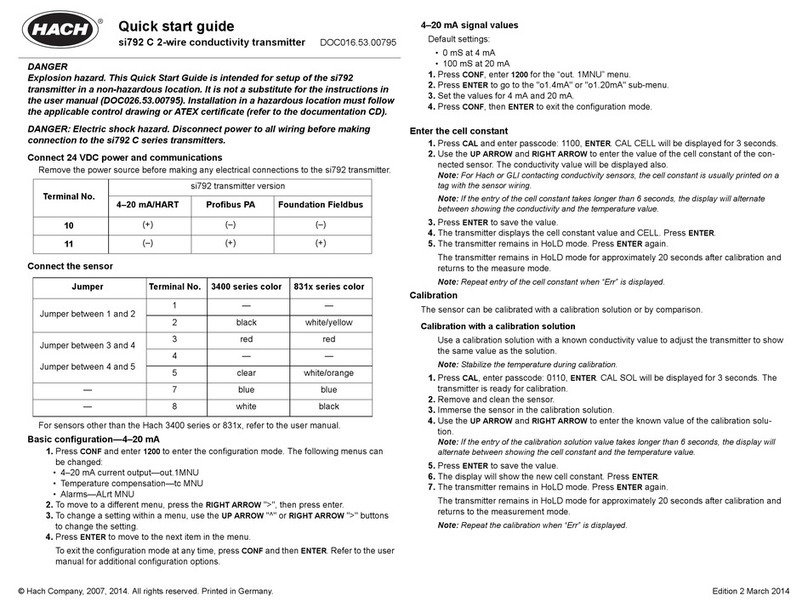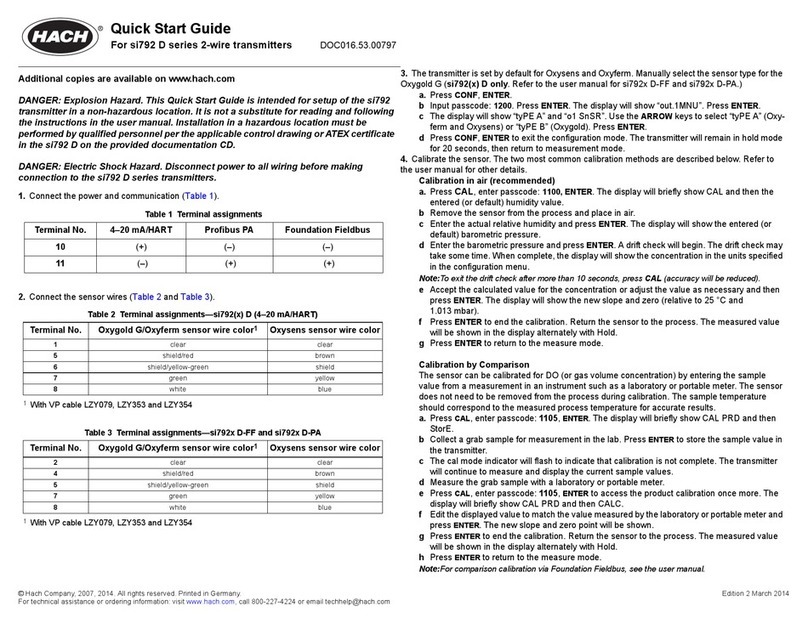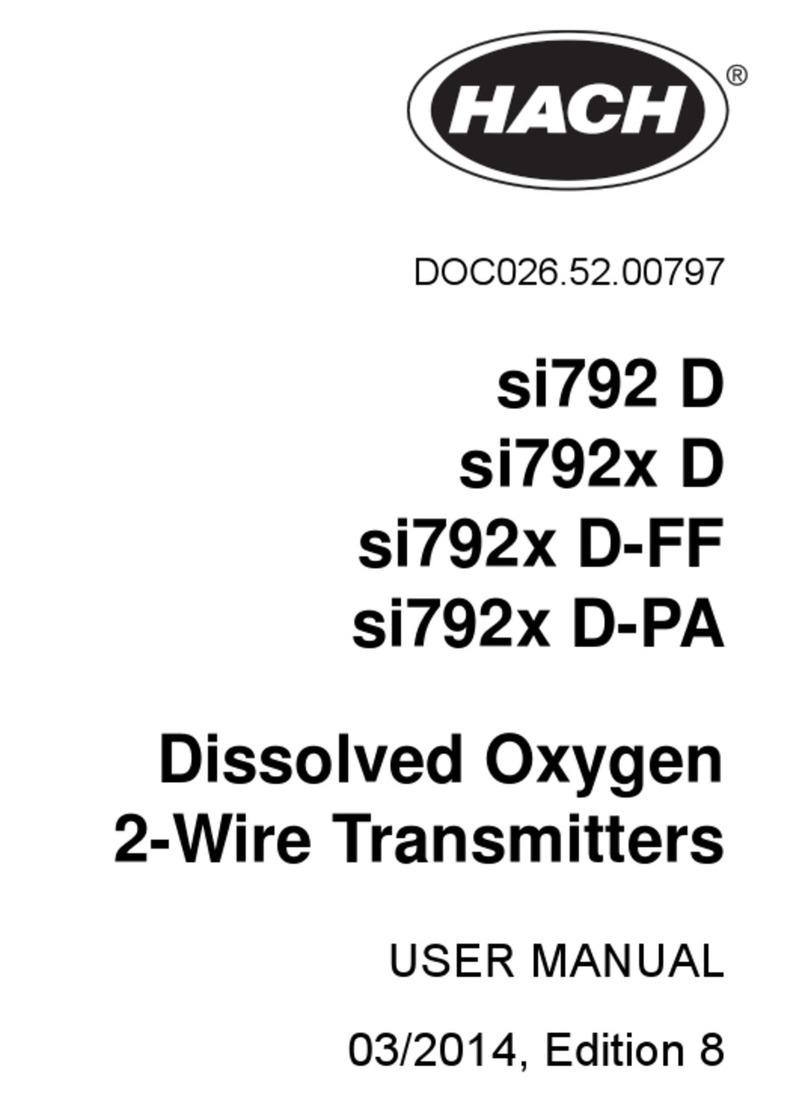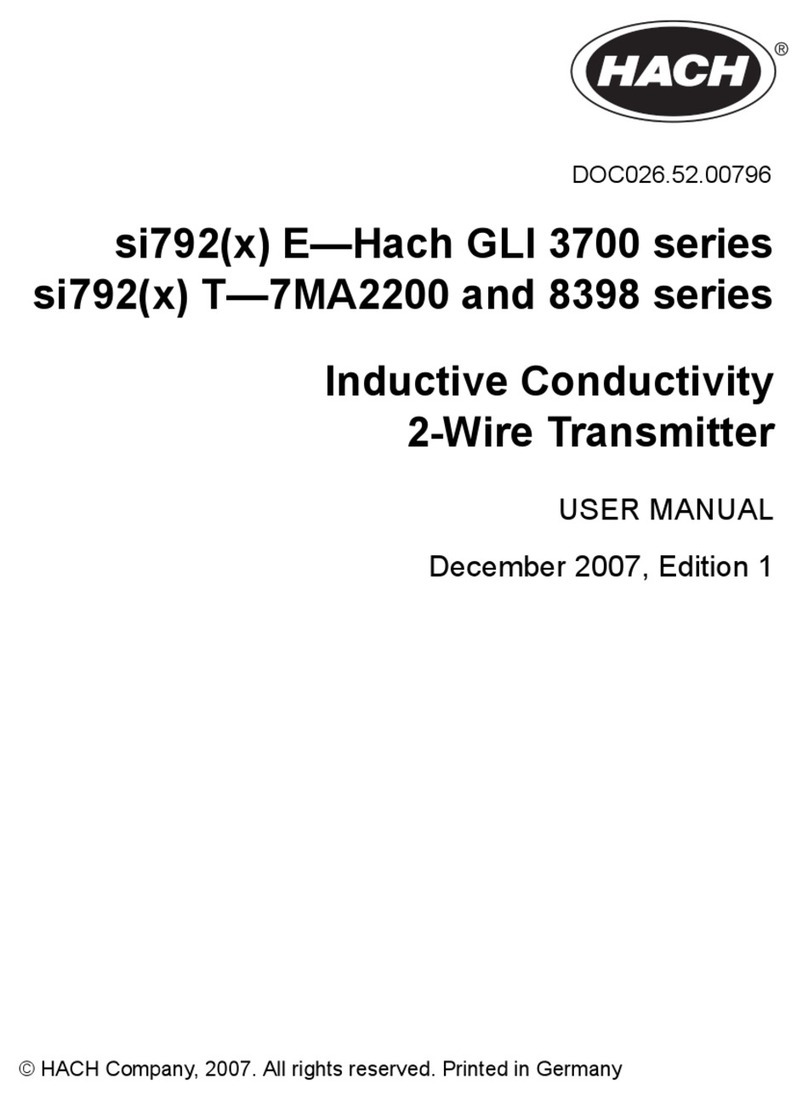
The field transmitter is a power supply and a radio communication device. The field transmitter
supplies power to the GS2440EX sensor and transmits data from the GS2440EX sensor to the Hach
H2S Data cloud server.
The field transmitter can be installed as an “associated apparatus” in the safe area, where the field
transmitter operates as a normal barrier module. Also, the field transmitter can be installed as
Category 2 equipment in Zone 1, where it is battery operated.
Since the field transmitter can be installed in the "safe area" as an “associated apparatus” or as an
intrinsically safe apparatus in Zone 1 with an intrinsically safe output to Zone 0, it is important for the
safety of the user that the installation instructions from the manufacturer are obeyed.
The check boxes on the product marking plate identify the marking in which the field transmitter is
compliant. By default, the marking will be for installation in a safe zone. If the DC and SCADA
connections are not used, a flip cover can be closed. When the flip cover is closed, the other marking
shows, which is for installation in Zone 1. The flip cover system makes sure that the marking is
correct even if the flip cover is accidentally removed.
Conditions of use:
• Use only batteries with the part number LXZ449.99.00003 and delivered by the “Hach Company”
with the CAx440EX field transmitter. Use of other batteries with the CAx440EX field transmitter
may have an effect on the Ex-safety and voids the ATEX certification.
• The CAx440EX field transmitter is only for fixed installation. Due to potential electrostatic charging
hazard, the box is marked ”WARNING – POTENTIAL ELECTROSTATIC CHARGING HAZARD –
SEE INSTRUCTIONS".
2.3 Radio (cellular)
CAUTION
This equipment is not intended for use in residential environments and may not provide adequate protection to
radio reception in such environments.
CAUTION
Electromagnetic radiation hazard. Make sure that the antenna is kept at a minimum distance of 20 cm
(7.9 in.) from all personnel in normal use. The antenna cannot be co-located or operated in
conjunction with any other antenna or transmitters.
N O T I C E
Network and access point security is the responsibility of the customer that uses the wireless instrument. The
manufacturer will not be liable for any damages, inclusive however not limited to indirect, special, consequential
or incidental damages, that have been caused by a gap in, or breach of network security.
The CAx440EX field transmitter includes a cellular modem. The field transmitter is approved for
mobile and fixed use with respect to RF exposure compliance. During cellular transmission, keep a
minimum distance of 20 cm (7.9 inches) between the field transmitter and the user to obey regulatory
requirements.
In addition, the compliance regulations that follow are met:
• EU Radio Equipment Directive (RED) 2014/53/EU Essential Requirements
- Safety & Health (Article 3.1a)
- EMC (Article 3.1b)
- Radio Spectrum (Article 3.2)
• UKCA Radio Equipment Regulations 2017
Note: Specifications are subject to change without notice.
The cellular options in Table 3 are available with the CAx440EX field transmitter.
English 7


































